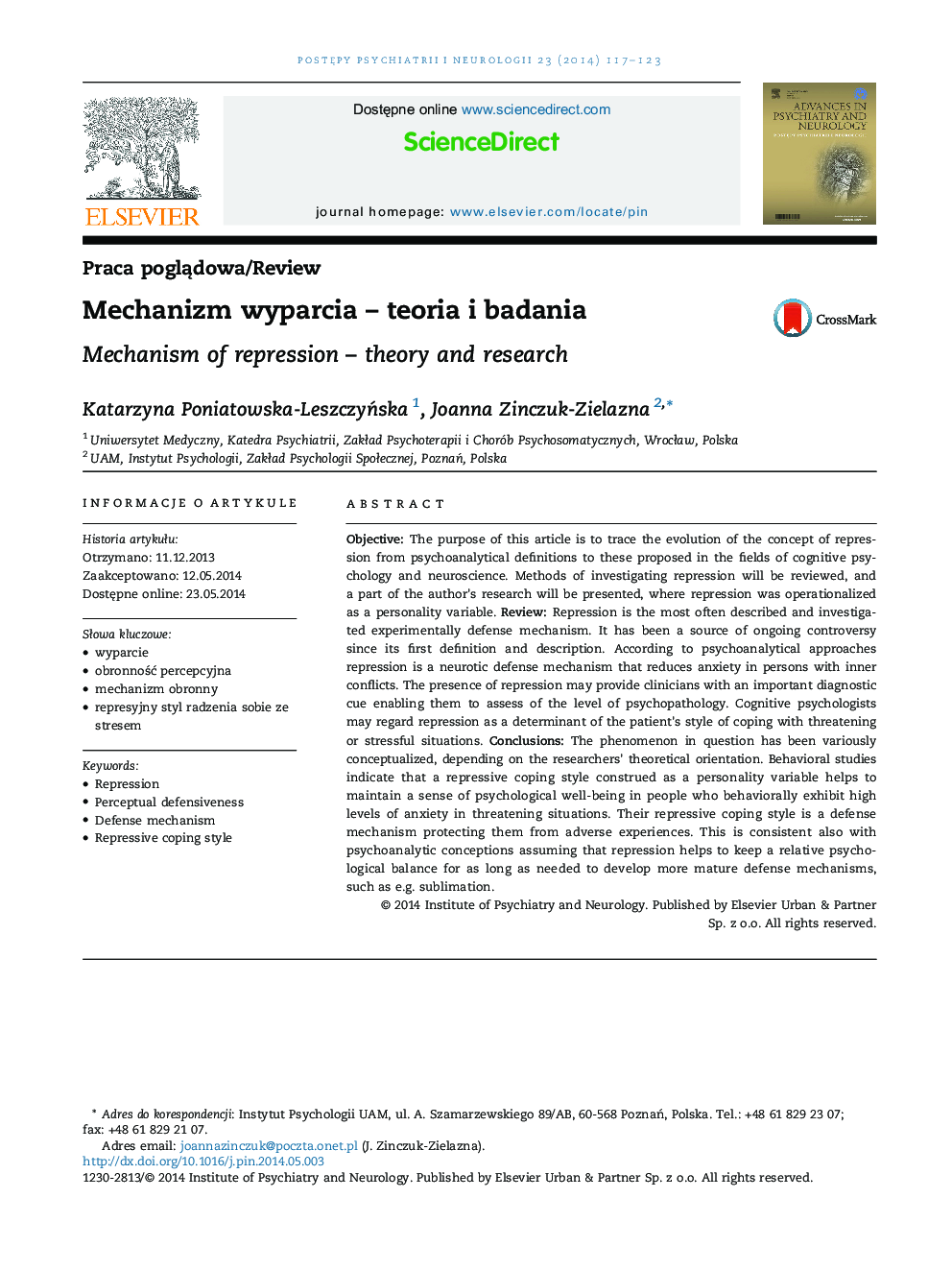| کد مقاله | کد نشریه | سال انتشار | مقاله انگلیسی | نسخه تمام متن |
|---|---|---|---|---|
| 331726 | 544959 | 2014 | 7 صفحه PDF | دانلود رایگان |
ObjectiveThe purpose of this article is to trace the evolution of the concept of repression from psychoanalytical definitions to these proposed in the fields of cognitive psychology and neuroscience. Methods of investigating repression will be reviewed, and a part of the author's research will be presented, where repression was operationalized as a personality variable.ReviewRepression is the most often described and investigated experimentally defense mechanism. It has been a source of ongoing controversy since its first definition and description. According to psychoanalytical approaches repression is a neurotic defense mechanism that reduces anxiety in persons with inner conflicts. The presence of repression may provide clinicians with an important diagnostic cue enabling them to assess of the level of psychopathology. Cognitive psychologists may regard repression as a determinant of the patient's style of coping with threatening or stressful situations.ConclusionsThe phenomenon in question has been variously conceptualized, depending on the researchers’ theoretical orientation. Behavioral studies indicate that a repressive coping style construed as a personality variable helps to maintain a sense of psychological well-being in people who behaviorally exhibit high levels of anxiety in threatening situations. Their repressive coping style is a defense mechanism protecting them from adverse experiences. This is consistent also with psychoanalytic conceptions assuming that repression helps to keep a relative psychological balance for as long as needed to develop more mature defense mechanisms, such as e.g. sublimation.
Journal: Postępy Psychiatrii i Neurologii - Volume 23, Issue 2, April–June 2014, Pages 117–123
